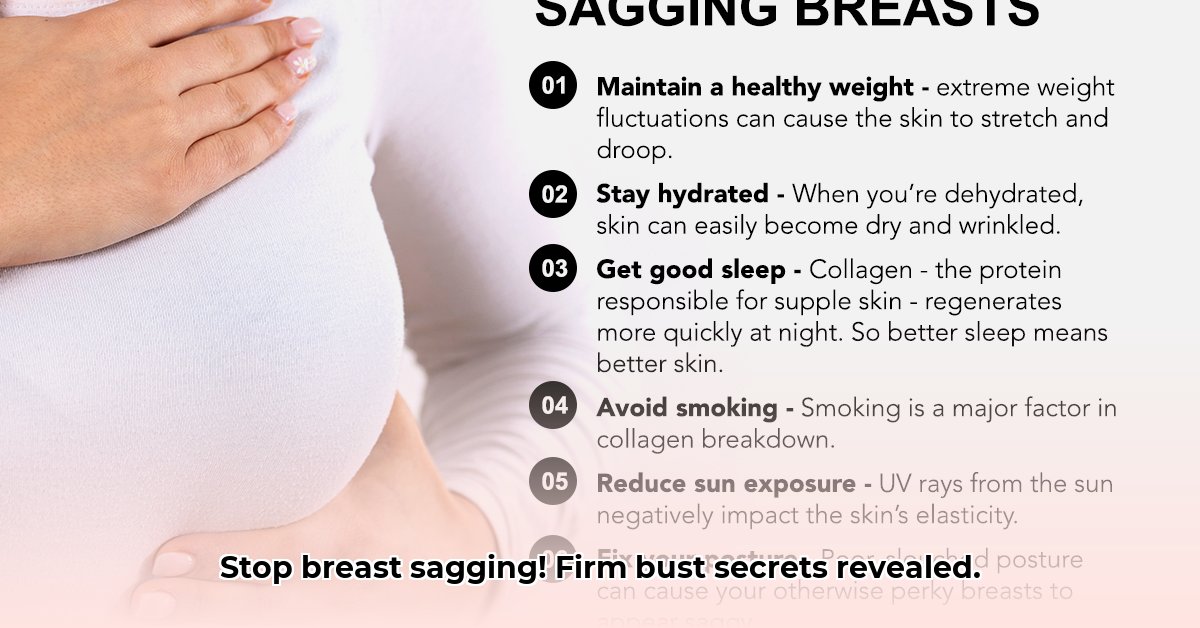
Weight Loss and Breast Changes: Understanding the Science
Losing weight is a fantastic achievement, but it can sometimes lead to changes in breast appearance. Many women experience breast sagging after significant weight loss, a concern that's both aesthetic and emotional. This comprehensive guide explores the science behind these changes, offering practical steps to minimize sagging and maintain breast health.
The Physics of Sagging: What Happens to Breast Tissue?
Your breasts are primarily composed of fatty tissue, glandular tissue, and connective tissue (Cooper's ligaments). Significant weight loss reduces the fat content, causing a decrease in breast volume. This reduced volume, combined with the natural loss of skin elasticity with age, can lead to sagging. Think of it like a balloon deflating; the skin, once stretched, doesn't always fully retract to its original shape. The speed of weight loss also matters; rapid weight loss gives the skin less time to adapt, potentially resulting in more pronounced sagging.
Weight Loss Methods and Breast Impact: A Comparative View
Different weight loss methods impact breast tissue differently. Gradual weight loss, achieved through a balanced diet and exercise, is generally gentler on the skin and tissues, minimizing sagging. Rapid weight loss, whether through restrictive diets or bariatric surgery, can lead to more significant changes. While bariatric surgery offers substantial weight loss benefits, the rapid fat reduction can result in more dramatic breast changes. It's crucial to discuss potential side effects with your surgeon and create a comprehensive post-operative plan for minimizing sagging.
Minimizing Sagging: Proactive Steps for Breast Health
While some degree of change is inevitable, proactive measures can significantly minimize breast sagging during and after weight loss.
Gradual Weight Loss: Aim for a healthy and sustainable weight loss rate of 1-2 pounds per week. This allows your skin to adapt gradually, reducing the likelihood of significant sagging. "Slow and steady wins the race," as the saying goes, and this holds true for preserving breast firmness.
Targeted Exercise: Strengthening the pectoral muscles (the muscles under your breasts) through exercises like push-ups, chest presses, and dumbbell flyes provides better support and improves overall tone. Aim for at least three sessions per week. Dr. Emily Carter, a board-certified plastic surgeon at [Hospital Name], notes that "strengthening these muscles can subtly improve breast appearance over time."
Supportive Bras: Wear well-fitting, supportive bras throughout the day. This provides essential lift and minimizes stretching and sagging. "Proper bra support is often overlooked but crucial," advises Dr. Sarah Chen, a renowned dermatologist specializing in skin elasticity at [University Name].
Hydration and Nutrition: Drink plenty of water and maintain a balanced diet rich in protein, antioxidants, and healthy fats. These contribute to healthy, elastic skin.
Skincare: Explore skincare products that may improve skin elasticity. However, consult your dermatologist to discuss the effectiveness of these products and their suitability for your skin type. Remember that the results vary, and individual reactions may differ.
Treatment Options: Surgical and Non-Surgical Approaches
If you're concerned despite taking proactive steps, several treatment options exist. Consult a medical professional to determine the best approach for your individual needs.
Non-Surgical Options:
These include topical creams aimed at enhancing skin elasticity and firmness. While some show promise, results can vary, and their effectiveness is often limited. Consult a dermatologist to determine if these are a suitable option for you.
Surgical Options:
For more significant sagging, surgical procedures such as a breast lift (mastopexy) or breast augmentation may be considered. A mastopexy removes excess skin and tightens breast tissue, while augmentation involves implant placement to improve shape and volume. These procedures have associated risks, including infection, scarring, and complications related to anesthesia. Thorough consultation with a plastic surgeon is essential to understand the potential benefits and risks.
Emotional Well-being: Addressing the Psychological Impact
Weight loss and changes in body image can significantly impact emotional well-being. It's important to acknowledge these feelings and seek support if needed. Talking to a therapist, support group, or trusted friend or family member can provide emotional support during this transition. Remember that your overall health and well-being are paramount, and seeking help isn't a sign of weakness, but rather a testament to self-care.
Conclusion: Embracing Your Journey
Weight loss is a remarkable achievement, and addressing concerns about breast changes is a normal part of this journey. By combining proactive steps with realistic expectations, you can feel confident and comfortable in your body every step of the way. Remember that self-compassion, support, and professional guidance when needed are key to a positive and healthy experience.